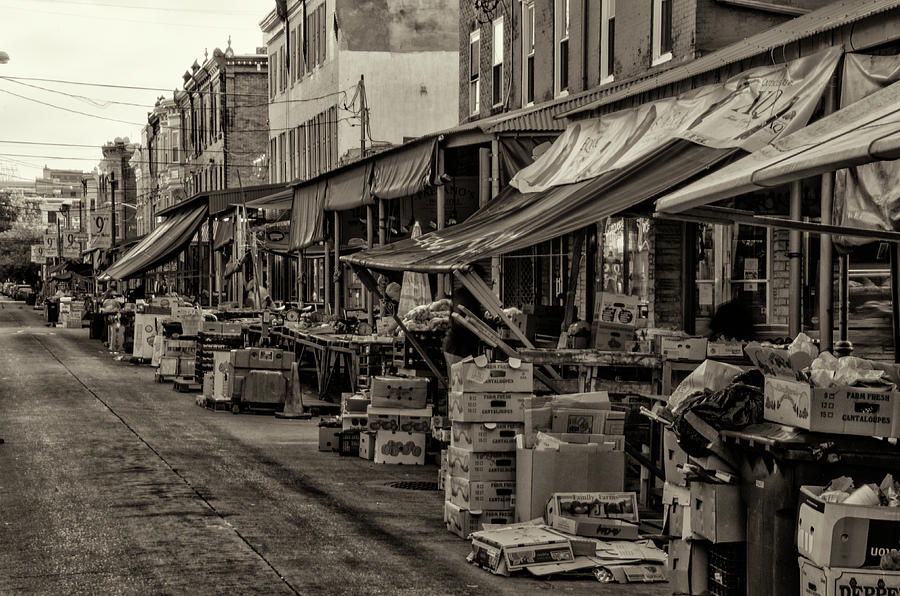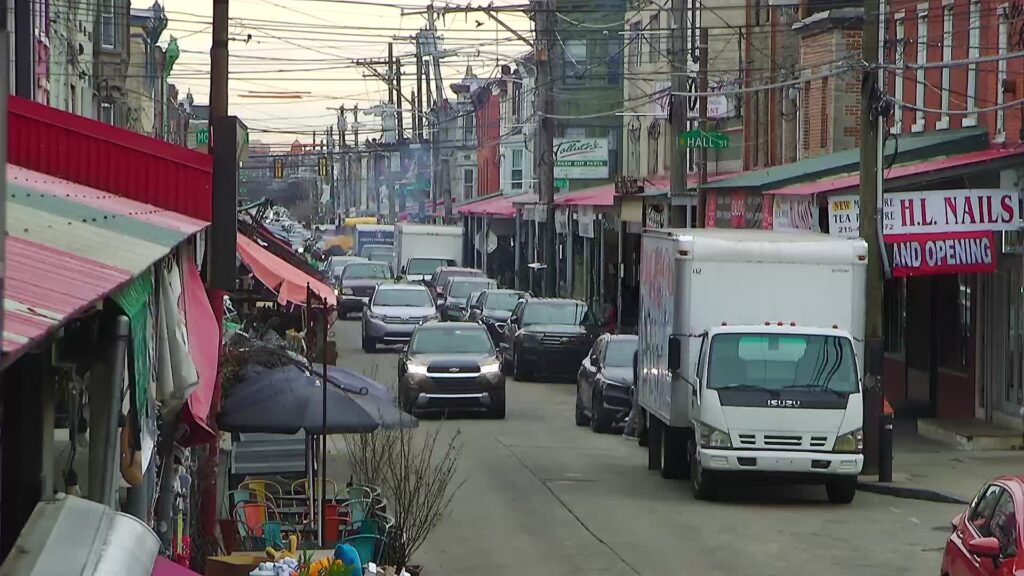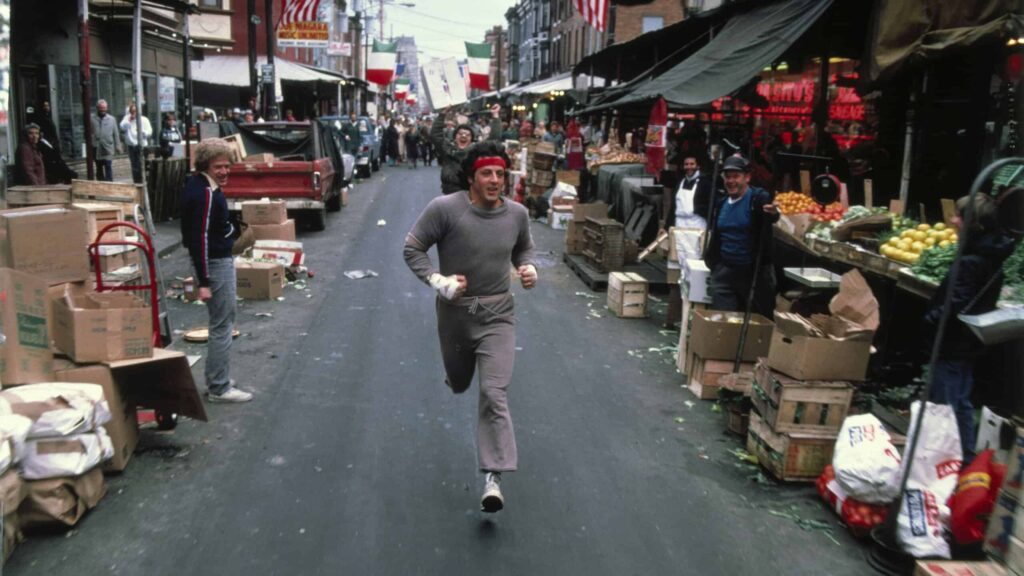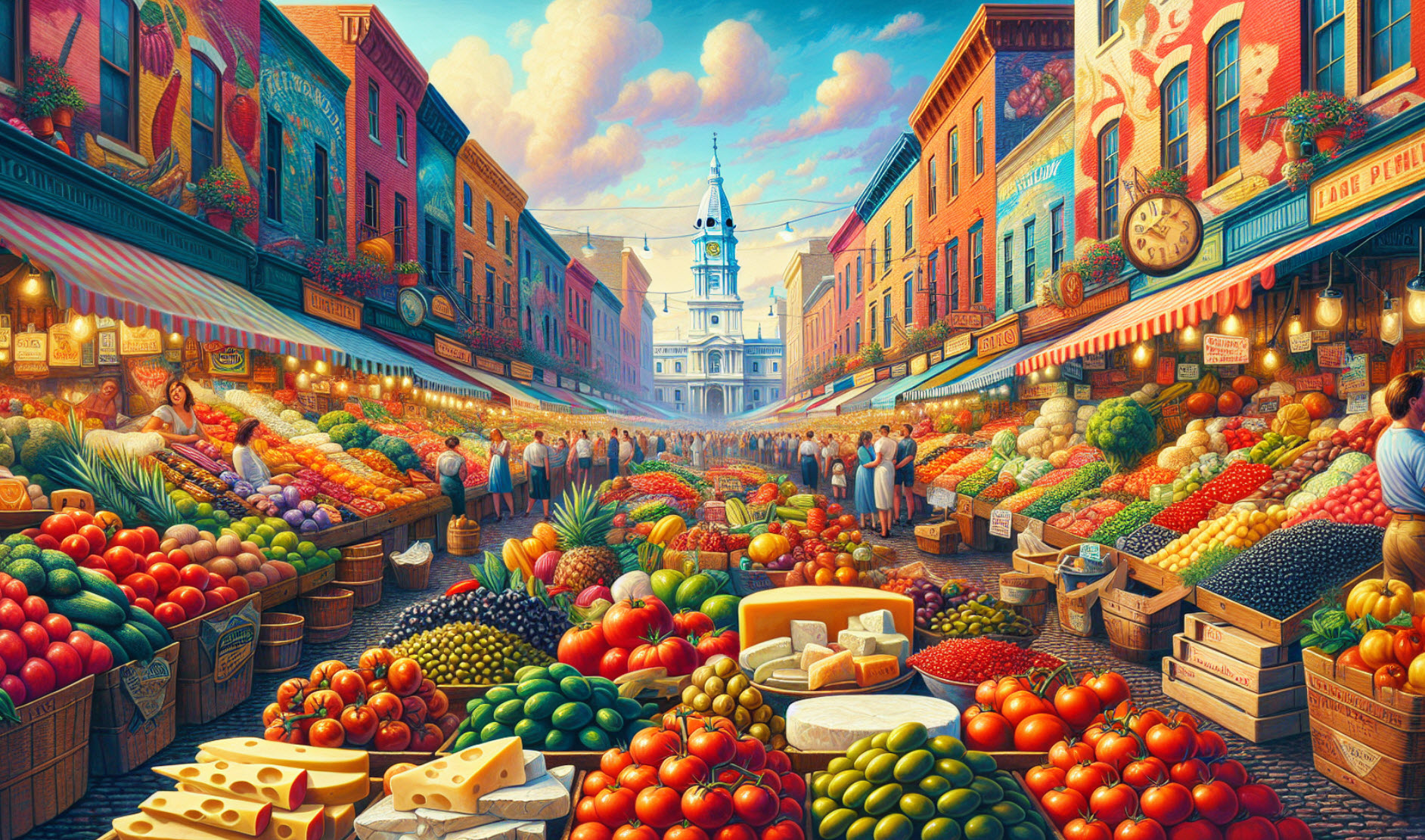Discovering the Charm of the Italian Market in Philadelphia
The Italian Market in Philadelphia located in the southern part of the city, is one of the oldest and largest open-air markets in the United States. Established in the late 19th century, this vibrant market spans nine city blocks along Ninth Street, offering a rich tapestry of cultural and culinary experiences. As the heart of the Italian Market beats, it not only showcases its roots but also embraces new, diverse businesses, making it a pivotal point in the city’s cultural and commercial landscape.
Visitors searching for ‘Italian Market near me’ or aiming to explore the ‘9th Street Italian Market’ will find themselves amidst a sensory journey filled with the aromas of fresh herbs, spices, and ground coffee beans. The market, a cornerstone of the Italian Market in Philadelphia, thrives in the Bella Vista and Passyunk Square communities, housing nearly 200 businesses. From the warmth of winter fires keeping shoppers cozy to the annual S. 9th St. Italian Market Festival, this iconic market offers more than just food; it offers an experience rooted in tradition yet dynamically evolving.
The Rich History of the Italian Market

The Italian Market, a cornerstone of South Philadelphia’s cultural and culinary landscape, boasts a history as rich and varied as the goods it offers. Established in the late 19th century, its roots are deeply entwined with the Italian immigrants who sought to recreate a slice of their homeland in America. Antonio Palumbo, an Italian immigrant, laid the groundwork for what would become a bustling community hub by opening a boarding house in the mid-to-late 1880s. This act catalyzed the emergence of businesses catering to the growing Italian community, setting the stage for the market’s enduring legacy.
- Timeline of Evolution:
- Late 1800s: Antonio Palumbo’s boarding house marks the beginning.
- 1915: Recognition as an official curb market, sanctioned by state and local government.
- 1940s: Known as the Italian Market due to the dominance of Italian-owned businesses.
- Today: A vibrant mix of traditional and international flavors, reflecting the market’s ability to adapt and thrive.
The market’s transformation from a local Italian hub to a multicultural marketplace illustrates its dynamic nature. Initially serving as the principal food shopping center for Italian immigrants, the market’s landscape began to evolve, incorporating businesses owned by vendors from around the world. This blend of cultures has created a unique area within the City of Brotherly Love, where visitors can indulge in an array of international cuisines and products. The Italian Market has not only survived but thrived by welcoming diversity, a testament to its resilience and adaptability.
- Key Milestones:
- 1914: S. 9th Street shopping district officially recognized by the City of Philadelphia.
- 1932: Establishment of Grassia’s Italian Market Spice Co., a testament to the market’s longevity.
- Modern Day: Gentrification and the introduction of upscale stores alongside traditional vendors.
The market’s architecture, characterized by contiguous structures easily modified for family businesses, facilitated the creation of a self-contained community. This unique setup allowed for a diverse array of services, including butchers, bakeries, clothing shops, and more, all within walking distance for residents. The Italian Market’s model of low-risk, low-cost, and low-growth business has played a crucial role in revitalizing this section of the city, proving that tradition and innovation can coexist harmoniously.
Cultural Diversity and Transformation
The Italian Market in Philadelphia has evolved into a vibrant tapestry of global cultures, reflecting the city’s diverse demographic changes over the years. This transformation is most evident in the variety of cuisines and vendors that line the streets of the market:
- Italian Staples and International Flavors:
- Di Bruno Bros.: A gourmet food store that has become a landmark for fine Italian and international foods.
- Claudio Specialty Foods: Known for their homemade mozzarella, a must-try for cheese lovers.
- Isgro Pastries: Offers a sweet taste of Italy with their famous cannoli and other desserts.
In addition to these Italian staples, the market has embraced a wide array of international flavors, including:
- Asian Influence: Vendors offering cuisines from Thailand, China, Laos, Vietnam, and Korea.
- Mexican Presence: An increasing number of taquerias and bodegas, with a concentration of Mexican stores on 9th Street between Washington Avenue and Federal Street, affectionately nicknamed “Pueblodelphia.”
The community at the Italian Market is a reflection of Philadelphia’s melting pot, described as accepting, diverse, and tight-knit. Over the years, the market has welcomed immigrant communities from Southern Italy, Jewish, Irish, Lebanese, Korean, Mexican, Vietnamese, Laotian, Cambodian, and Chinese backgrounds, each adding their unique flavors and traditions to the market.
- Cultural and Culinary Landscape:
- Traditional and New: A blend of traditional produce vendors and specialty butchers alongside newer additions like cozy cafes with outdoor seating, upscale gift stores, and gourmet shops.
- Sensory Experience: The market is a feast for the senses, with the aroma of fresh herbs, spices, seafood, and ground coffee beans mingling with the sounds of multiple languages and the sight of fresh pasta and homemade chocolates.
- Diverse Influence: The Italian character of the neighborhood persists, complemented by the contributions of immigrants from Mexico, Korea, and China, enriching Philadelphia’s cultural and culinary landscape.
Today, the Italian Market stands as a microcosm of the city itself, showcasing its hardscrabble history and serving as a testament to the power of diversity and acceptance in creating a thriving community.
A Culinary Journey Through the Italian Market

Embarking on a culinary journey through the Italian Market in Philadelphia means diving into a world where every bite tells a story of tradition, innovation, and community. With over 100 food vendors, specialty shops, and restaurants, many family-owned and operated, the market is a treasure trove for food enthusiasts seeking authentic and diverse flavors.
Top 11 Must-Try Dishes in the Italian Market:
- Pibil Pork Tacos at Casa Mexico – A burst of flavor wrapped in a soft tortilla.
- Cheesesteak at Angelo’s Pizzeria – A Philadelphia classic with a market twist.
- Lobster Benedict at Alma del Mar – A luxurious start to any day.
- Pastrami-Spiced Smoked Salmon and a Bagel from Biederman’s Specialty Foods – A fusion of flavors that delights.
- Oysters on the Half Shell at Anastasi Seafood – Freshness with every slurp.
- Ralph’s Famous Veal Parmesan at Ralph’s – A dish with a rich history.
- Blue Tacos from Blue Corn Mexican Restaurant & Bar – A visual and gustatory treat.
- Cannoli from Isgro Pastries – A sweet staple of Italian dessert.
- Painkiller Sandwich from Gleaners Cafe – A sandwich that promises more than just taste.
- Espresso at Anthony’s Italian Coffee House – The perfect Italian market pick-me-up.
- Ricotta Gnocchi at Fiorella – Soft, pillowy delights in every bite.
Diverse Offerings:
- Fresh produce, meats, seafood, cheeses, baked goods, and Italian specialty items line the market, offering a sensory experience that’s both visual and olfactory. The smell of herbs, spices, fresh seafood, and coffee beans fills the air, complementing the sight of fresh pasta and chocolate.
- The Italian Market is not just about food; it’s a cultural hub where visitors can find everything from gourmet shops and restaurants to household and commercial goods. The market is a year-round destination, open every day of the week, catering to a wide range of culinary and shopping needs.
Exploring the Market:
- For those looking to dive deeper into the Italian Market’s offerings, guided tours are available. These tours explore the sights, smells, and tastes of Philadelphia’s bustling 9th Street Italian Market, offering a variety of food samples that equal a full meal. This includes Philly’s famous tomato pie, hand-made cannoli, fresh tacos, and an Italian Market specialty, providing a comprehensive taste of what the market has to offer.
- The market’s rich diversity is reflected in its vendors, with over 100 including seven meat markets, four dedicated cheese shops, four poultry stores, and over 40 produce vendors. This diversity ensures that visitors can enjoy a wide range of products, from cheese, pasta, baked goods, seafood, Italian Water Ice, to antique shops, herbal shops, jewelry, and more.
The Italian Market in Philadelphia is a culinary destination that offers a unique blend of traditional and international flavors, making it a must-visit for anyone looking to experience the heart and soul of the city’s food culture.
The Italian Market in Popular Culture
The Italian Market’s vibrant streets and bustling atmosphere have not only captivated the hearts of those who visit but have also caught the eye of filmmakers and authors, making it a notable backdrop in popular culture. Its authentic charm and lively spirit have been immortalized in several films, television series, and books, further solidifying its place in Philadelphia’s cultural tapestry.

- Films and Television Series:
- Rocky and Rocky II: Perhaps the most iconic portrayal, the Italian Market serves as a pivotal backdrop where Rocky Balboa, portrayed by Sylvester Stallone, famously runs through the market, highlighting its vibrant energy and community spirit.
- Hack: This television series also featured the Italian Market, showcasing its streets as a backdrop for the show’s narrative.
- It’s Always Sunny in Philadelphia: Known for its humorous take on life in Philadelphia, this series includes scenes set in the Italian Market, adding a touch of local flavor to the episodes.
- Literature and Film Photography:
- “South Philadelphia’s Little Italy and 9th Street Italian Market” by Michael Dipilla: This book delves into the rich history and cultural significance of the Italian Market, offering readers a comprehensive look at its evolution and impact on the community.
- “Winterkill” (1977): A photograph taken during the filming of this movie, starring Elizabeth Taylor, Anthony Perkins, and Jeff Bridges, captures a moment in time in the Italian Market area, showcasing its role as a cinematic location.
Beyond its appearances in media, the Italian Market is also the heart of Philadelphia’s largest and most vibrant block party, the S. 9th St. Italian Market Festival. This annual event draws visitors from near and far, eager to partake in the celebration of culture, food, and community that the Italian Market embodies.
- Italian Market Festival:
- Philadelphia’s Largest Block Party: The festival is a testament to the Italian Market’s enduring appeal and its role as a communal gathering place. It features a wide array of food vendors, live entertainment, and activities for all ages, making it a must-visit event for anyone looking to experience the true essence of the market and its diverse offerings.
Visiting the Italian Market: What to Know
For those planning a visit to the Italian Market in Philadelphia, nestled in the vibrant Bella Vista neighborhood, here are essential tips and insights to enhance your experience:
Getting There:
- Public Transportation: The market is well-served by SEPTA, with multiple bus stops and access via the Broad Street Line, making it easily accessible for visitors. The 47 bus, which travels down 7th Street just two blocks away, offers a convenient route.
- Parking: It’s important to note that parking can be challenging due to the market’s popularity and the narrow streets typical of South Philadelphia. Street parking is available but limited. Visitors are encouraged to consider public transit or rideshare options.
Market Hours and Shopping Tips:
- Operating Hours: The Italian Market is open year-round, generally from 9 am to 5 pm. However, it’s worth noting that many businesses have their own schedules, with some open until lunchtime on Sunday and closed on Monday. For the most current information, checking individual vendor hours or contacting the Italian Market Visitor Center at 919 South 9th Street is advisable.
- Shopping Experience:
- Cash Preferred: Many stores in the market prefer cash transactions, so having cash on hand is a good idea.
- End-of-Day Discounts: Some vendors offer discounts towards the end of the day. It’s a great opportunity to snag some deals.
- Specialties: Always inquire about vendor specialties. Many family-owned businesses are proud of their unique offerings, from homemade mozzarella at Claudio Specialty Foods to the famous cannoli at Isgro Pastries.
- Online Shopping: For those who prefer the convenience of shopping from home, online shopping with delivery is available through Mercato.
Events and Festivities: The Italian Market hosts several annual events that draw crowds from across the city and beyond. The South 9th Street Italian Market Festival, known as Philadelphia’s Largest & Best Block-Party, features Grease Pole Climbing, Procession of Saints, and a variety of entertainment options. The Christmas Lighting Ceremony adds a festive touch to the market during the holiday season. Visitors are encouraged to check the market’s newsletter or contact the Visitor Center for the latest information on upcoming events and festivities.
By keeping these tips in mind, visitors can fully embrace the rich cultural tapestry and culinary delights the Italian Market has to offer, making their visit a memorable one.
Through the exploration of Philadelphia’s Italian Market, we’ve delved into a world brimming with cultural diversity, rich history, and, most importantly, a vibrant culinary landscape that stands as a testament to the enduring spirit of community and tradition. This bustling marketplace not only mirrors the dynamic cultural shifts of the city but also serves as a culinary heart, offering an array of flavors from around the globe. The blend of traditional Italian businesses with an ever-growing multicultural influence underscores the market’s ability to adapt and thrive, cementing its place as a must-visit destination for anyone looking to experience the authentic pulse of Philadelphia.
As we reflect on the Italian Market’s journey from its humble beginnings to its position today as a centerpiece of culinary and cultural diversity, it’s clear that the market embodies the true essence of Philadelphia’s rich tapestry. The promise of discovering something new with each visit, whether it’s through the taste of innovative dishes or the warmth of the community, reinforces the market’s magnetic allure. For food lovers, cultural enthusiasts, or anyone yearning for a sense of connection and history, the Italian Market awaits with its doors wide open, ready to offer an experience as enriching as the city itself.
FAQs
What is the origin story of the Italian Market in Philadelphia? The Italian Market in Philadelphia traces its roots back to the mid-to-late 1880s. It originated when Antonio Palumbo, an Italian immigrant, set up a boarding house in the area for fellow Italians. This sparked the establishment of various businesses to cater to the burgeoning Italian community, ultimately leading to the creation of the largest and oldest outdoor, continuous market in the United States.
Is there a specific Italian neighborhood in Philadelphia? Yes, Philadelphia boasts an Italian Market that stretches along about ten city blocks of Ninth Street in the South Philadelphia area. This market is celebrated as one of the oldest and most expansive open-air markets in America, serving as a vibrant hub of Italian culture.
Does Philadelphia feature a district known as Little Italy? Indeed, Philadelphia is home to a district commonly referred to as “Little Italy,” located in the Bella Vista neighborhood of South Philadelphia. By 1970, the Italian immigrant community had surged to around 600,000 individuals, with a significant concentration in this area. Bella Vista has consistently served as a center for Italian life and traditions, embodying the essence of Philadelphia’s Little Italy.
